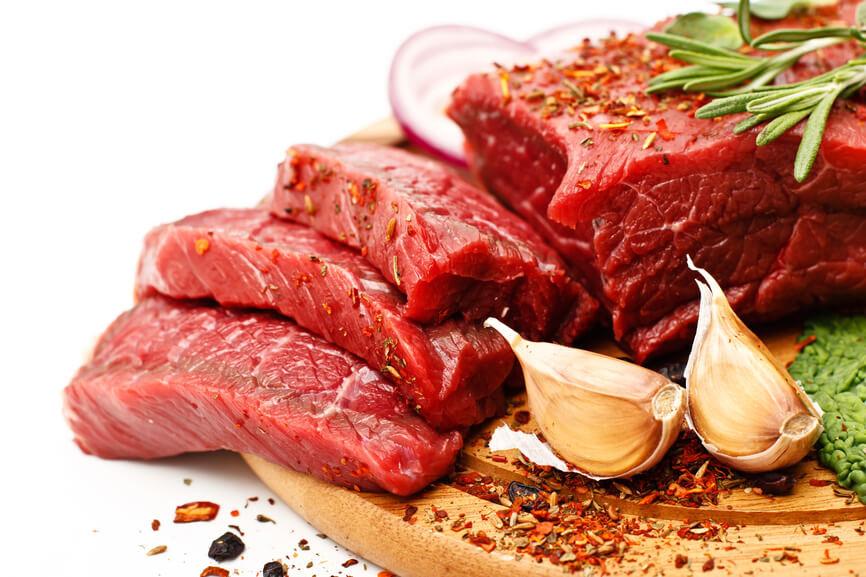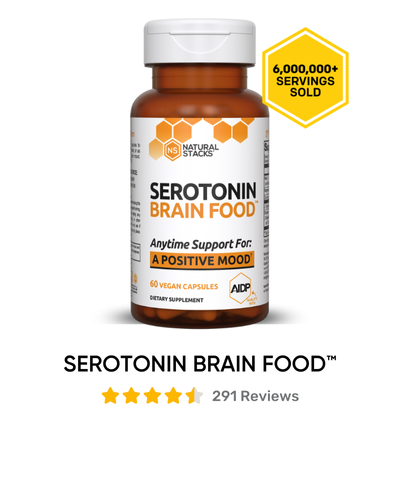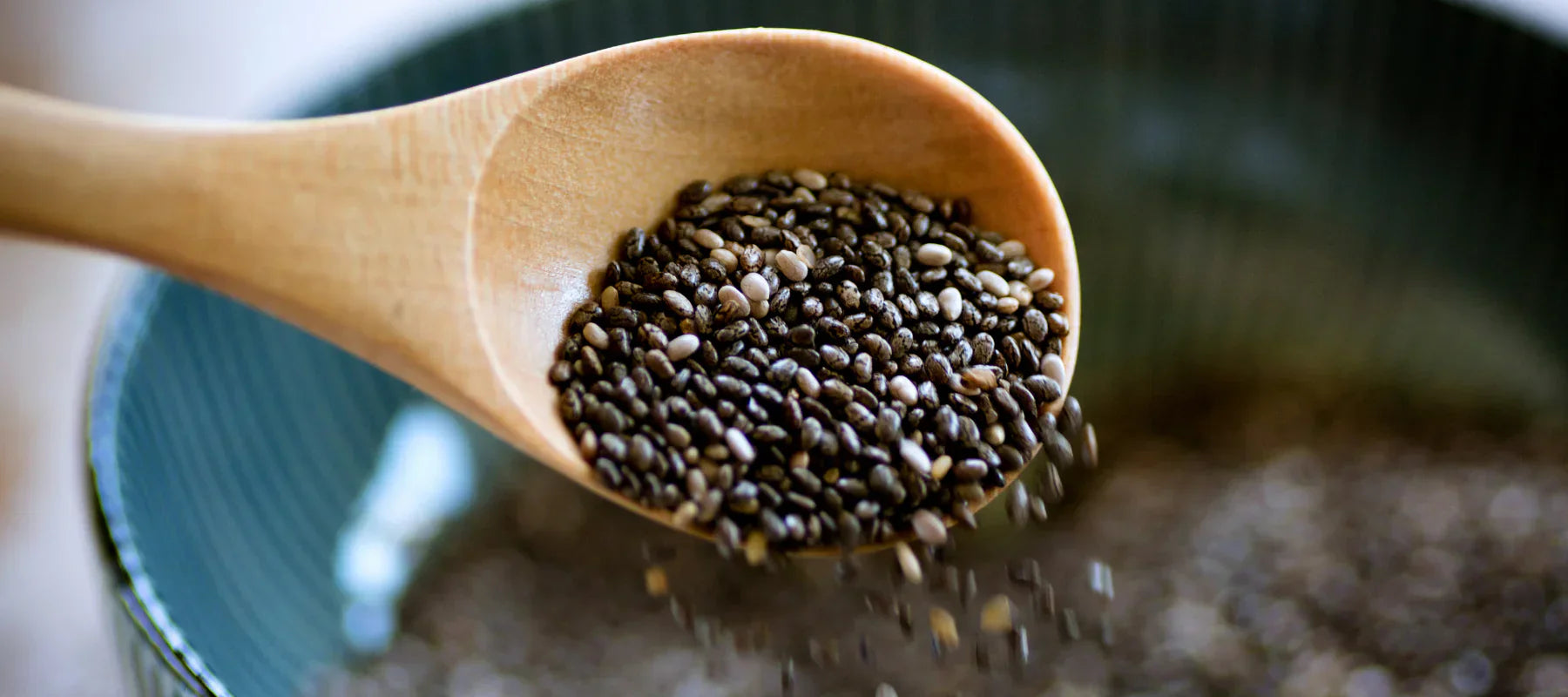The Beginner's Guide To Low Carb High Fat Diets

Diets low in carbohydrates and high in fats have become increasingly popular as a means for people to lose significant amounts of weight in a relatively short amount of time.
By now, most of you are probably familiar with the Atkins Diet, which dates back as early as 1958, but further variations on this theme have stepped into the limelight in recent years. You may be more familiar with the term ketogenic diet, which entails a process where, when your body doesn't have enough available blood glucose, the body begins to break down fats into their constituent fatty acids in the liver before being converted into ketone bodies, or simply ketones.
Ketogenic diets have great application in the field of medicine, being of particular relevance to diabetic and epileptic patients.
How Does a Low Carb, High Fat Diet Work?
Now let's dive in and talk about what this low-carb business is all about.
*Grab Your Free Keto Checklist with Our Field-Tested Secrets For Success
It needs to be made clear that a low carb, high fat diet doesn't necessarily have to classified as being a ketogenic diet, nor does it need to be in order to be considered useful or successful. Let’s delve a little deeper to see if a low carb, high fat diet is the right choice for you.
Without overcomplicating matters, insulin is essentially a storage hormone which serves many purposes in the body, most importantly is the shuttling of nutrients into various tissues and cells throughout the body.
The primary reason for insulin being released is the ingestion of food, and of course carbohydrate stimulates a far greater insulin release once it is broken down into glucose and released into the bloodstream.
Insulin is an important hormone, but the quality of your diet and various lifestyles can influence insulin secretion and glucose management.
When the typical sedentary person consumes an excessive amount of carbohydrate, it is broken down into glucose in the intestines before entering the bloodstream, which results in a massive release of insulin. This then leads to a sudden drop off in blood glucose levels as the insulin does its job, leading to uncontrollable cravings and the all-too famous ‘sugar crash.’
As this occurs more and more, and the body stores more fat, insulin sensitivity begins to diminish, and insulin resistance develops.
All this essentially means is that the receptor sites in your cells become less receptive to the effects of insulin, causing your body to release more and more insulin over time, and potentially leading to type II diabetes.
The low carb component of a LCHF, ketogenic, or Bulletproof diet is an effective way to keep insulin levels low; this is particularly important when you consume large amounts of dietary fat which could easily be stored as body fat when insulin levels are elevated.
What’s more, the high fat part of the diet basically encourages the body to switch to burning fat for its primary fuel source -- this means not only the fat you consume in your diet, but your stored body fat as well.
In a hurry? Skip ahead to actionable tips, tricks, and recommended supplements to help you succeed.
The Benefits of Low Carb Dieting
By now, we can clearly see that low carb, high fat diets offer a range of benefits, but let’s have a look some other benefits:
- Decreased potential for fat storage, particularly visceral of ‘heart attack’ fat which surrounds the organs in the abdominal cavity
- Increased potential for fat utilization, leading to weight loss and muscle gains.
- Decreased inflammation due to a large intake of healthy anti-inflammatory fats and the reduction of potentially inflammatory foods containing processed carbs and sugars
- Decreased appetite due to the slowing of digestion by dietary fat and the appetite-suppressing effects of protein
- Improved blood markers such as HDL/LDL, triglyceride, and glucose
- Possible reduction in blood pressure
- Powerful implications for sufferers of type II diabetes, epilepsy, Alzheimer’s Disease, and Parkinson’s Disease
- Decreased digestive stress due to a reduction in processed foods and an increase in dietary fiber
You may enjoy one, some, or all of these benefits, but the advantages of low carb, high fat diets are undeniable for many people.
Nevertheless, there are some people who do not respond well to this type of dieting, so next we’re going to look at the disadvantages of low carb dieting before taking a closer look at whether or not this is the right approach for you.
The Disadvantages of Low Carb Dieting
Before diving into a brand new diet plan, it is essential that you know what you’re getting yourself into. Low-carb diets have become wildly popular, but before making the decision, it's important to think about the potential downsides.
During the first 7 – 10 days of removing carbohydrates from your diet, your energy levels are highly likely to drop significantly.
This is typically referred to as the adaptation phase, which simply means that your body needs time to produce the enzymes and other chemicals required to start using fat as its primary fuel source.
The adaptation phase is the hardest, but most important of beginning your low carb diet.
BONUS: Breeze through the adaptation phase easier and faster than ever.
During this adaptation phase you may experience brain fog, lethargy, headaches, trouble sleeping, bad breath, and a feeling of heaviness throughout your body. Some of these sensations can be pretty unpleasant or uncomfortable, sure, but if you stick to it you’ll be out of the woods in a week or slightly longer.
It's also common to experience low-level dehydration and increased thirst. This is likely because one gram of carbohydrate typically carries three grams of water along with it. By removing carbs from your diet you will naturally drop a lot of water weight right off the bat.
The adaptation phase is short-lived, although another main challenge is sticking to the diet and passing up on the many sugary and carbohydrate-rich foods in the Western diet.
Eating out with friends, enjoying family meals, and grabbing a quick snack are all luxuries that we take for granted, and you will likely begin to realize very early on that these kinds of events aren’t very low-carb-friendly.
This is not to say that sticking to a low carb eating plan is impossible, because it isn't.
With a little forethought, preparation, and patience, you will soon learn the tricks of the trade or ketogenic ‘hacks’ to really help you get the most out of not just your diet, but your life as a whole.
Jump ahead to tips, tricks, and supplements for a successful low-carb transition.
Is Low Carb Dieting Right for You?
As we’ve seen already; low carb high fat dieting isn’t for everyone.
Here are some questions to ask yourself before beginning a low carb diet; these should help to clarify if it is the right choice for you:
Are You An Athlete?
If you are an experienced, hard-training athlete then you are most likely already aware of what kind of dietary methods work for you; however, in the interest of thoroughness let’s start here. Athletes engaging in frequent, high-intensity training – not weekend warriors or casual gym goers – usually do best on a diet that contains 30 – 50% carbohydrates, maybe even higher for people like bodybuilders. While the low carb approach has become popular in Crossfit communities and other niches of the fitness community, this does not mean it is optimal or even healthy, so take the time and apply the due diligence to determine which camp you fall in so that you can strategically figure out what works best for you.
To learn more about combining physical exercise with a low carb or ketogenic diet check out the fan favorite Ketone Episode of the Optimal Performance Podcast.
Have You Eaten High Carb Before?
If so, what was your experience, and just how high was your carbohydrate intake? This is important to consider because if a high carb diet left you feeling like a million bucks on a consistent basis and you haven’t gained excess body fat then low carb might not be for you. On the other hand, if eating carbohydrates causes you to feel bloated, lethargic, foggy headed, and generally miserable then you a low carb high fat diet might be the solution for you.
Have You Eaten Low Carb Before?
This is a difficult question to answer for some because ‘low carb’ tends to be a relative term, but if we take it to mean no more than 30 – 50g of carbohydrate daily then this should clear things up nicely. After adjusting for the often unpleasant adaptation phase, does low carb eating leave you feeling lazy, leaden, and lethargic, or do you feel warm, vibrant, mentally alert, and full of energy? If you’ve tried low carb and high carb without any success then a more moderate and balanced diet is probably the right choice for you.
Are You Obese or Do You Have Underlying Medical Conditions?
You should always consult your doctor before beginning any extreme diet - and it can hardly be argued that a ketogenic diet is not on the extreme end of things – but if you suffer from insulin resistance or diabetes then you could stand to benefit greatly from low carb dieting. This is also true of obese people, who have impaired insulin management and dangerously high blood glucose. The vast majority of heavily overweight individuals see massive and immediate results from dramatically reducing their carbohydrate intake.
Are You Ready?
If you’re merely entertaining the idea of improving your health and wellbeing in a profound way then you should know that low carb dieting isn’t easy for everyone, and the adaptation phase in particular can be enough to put some people off of the concept permanently. So, take your time, ensure you know what to expect, and you will be far more likely to succeed!
What to Eat and What Not to Eat
There are some clear cut Do’s and Don’t’s when it comes to which foods to eat on a low carb high fat diet.
Let’s start with the foods you will want to eat on a regular basis:
- Fatty cuts of meat are preferred to ensure you are consuming adequate dietary fat.
- Poultry such as Chicken, Turkey, Duck, and so on
- Beef
- Lamb
- Pork
- Oily Fish such as Salmon, Mackerel, Sardines, and so on
- Whole eggs
- Healthy oils such as Coconut, MCT Oil, Olive, Avocado, Macadamia
- Real Butter
- Fatty Cheese (beware of potential lactose or milk sugar content)
- Bacon
Vegetables:
The following vegetables can be eaten somewhat freely because of their high fiber and low carbohydrate content:
- Cruciferous Vegetables such as Broccoli, Cauliflower, Cabbage, and Brussels Sprouts
- Leafy Greens such as Spinach, Arugula, Chard, Lambs Lettuce, and Mustard Cress
- Asparagus
- Eggplant
- Zucchini
- Cucumber
- Lemons and Limes
The following vegetables are acceptable but strict portion control should be practiced:
- Onion limit to ½ medium onion per serving
- Tomato limit to 1 or 2 tomatoes
- Carrot limit to 1 small-to-medium carrot
- Bell Peppers limit to ½ - 1 pepper
- Mushrooms limit to a handful of white button mushrooms or equivalent
When in doubt, simply type “carbs in [insert food]” into Google.
This final selection of foods is those that you will absolutely want to avoid, either because they are unsuitable for low carb dieting or because they are generally harmful to health:
- Refined Vegetable Oils such as Canola, Safflower, Soy, and Corn
- Margarine and other Hydrogenated Fats and Oils
- Starchy Carbs such as Wheat, Potato, Oatmeal, Corn, Rice, and so on
- Fast Food such as Pizza, French Fries, and Ice Cream
- Fruit should generally be avoided with the exception of small amounts of low-sugar fruits like blueberries.
- Alcohol
- Sugar, Honey, Maple Syrup, Corn Syrup, and so on
Tips & Tricks for Ketogenic Mastery
Count Those Carbs!
Carbs should be kept in the 30 – 50g range daily, with fibrous vegetables and leafy greens making up the bulk of that number. This means that most dairy products, with the exception of cream and fatty cheeses, are off the menu because of their lactose (milk sugar) content.
You will also want to keep a watchful eye on the net carb content of everything from condiments and spice mixes to the cream in your morning coffee. You may initially be very surprised by just how many grams of sugar and carbohydrates are hidden in every day foods; a few grams here or there can really add up and keep you from achieving a state of ketosis.
Portion That Protein!
While ketosis is not absolutely necessary for low carb success, it certainly does go a long way and can help to keep you out of a kind of ‘metabolic purgatory’ where you body is struggling to settle on its main source of energy. For this reason, it is generally best to consume around 70% of your calories from fats, with the remaining 30% coming predominantly from protein and some trace amounts of carbohydrates from vegetables.
Suitable protein sources include meats like chicken, turkey, beef, lamb, pork, as well as whole eggs, bacon, some lunch meats, salmon and other oily fish, and just about anything that used to swim, fly, or walk the Earth! You can also supplement with whey protein (we recommend Natural Protein with Collagen to give your body all the immune support and tissue maintenance it needs while making this transition to your new diet).
Eat Your Greens!
We have already touched on the subject of vegetables but the importance of consuming ample fiber, fat-soluble vitamins, antioxidants, and so on really can’t be stressed enough.
The idea of eating bacon and eggs at every meal may sound appealing to some, but it's important to increase micronutrient intake from vegetables.
Suitable items include broccoli, cauliflower, spinach, arugula, eggplant, avocado. You may also want to add items such as sauerkraut and kim chi to maintain gut health.
Maintain a Balance!
It can be very exciting when starting a low carb, high fat diet; after all, who doesn’t want to douse their meals in olive oil or eat big juicy steaks every day? Just remember that this is your body and you only get one; gorging on nothing but saturated fats and neglecting healthy, balanced nutrition is a recipe for disaster and can lead to widespread inflammation and digestive issues.
Instead, respect your body, focus on the four pillars of nutrition, and ensure you are providing it with everything it needs to function optimally.











